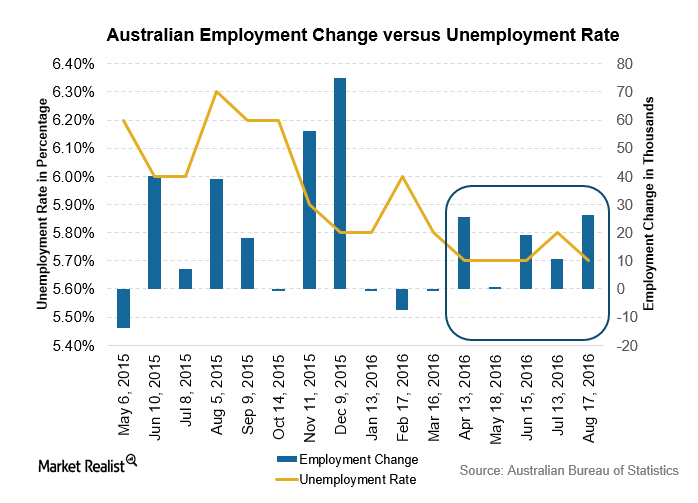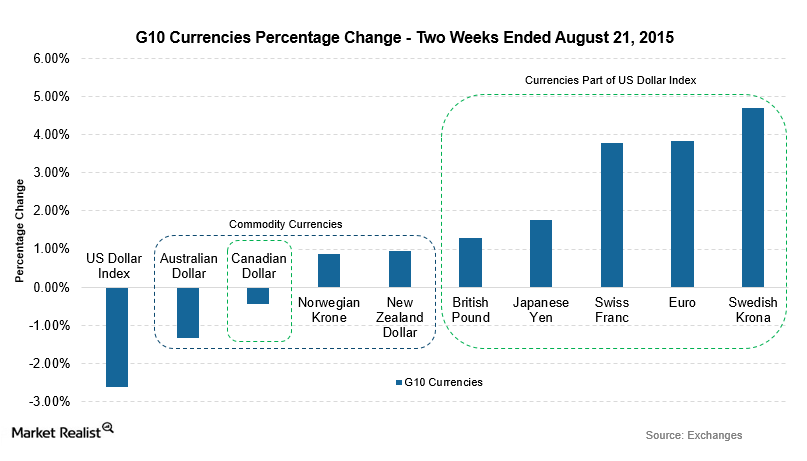Westpac Banking Corp
Latest Westpac Banking Corp News and Updates

Australian Unemployment Fell: Is More Easing Needed?
The Australian Bureau of Statistics published the employment report for July on August 18, 2016. The unemployment rate fell by 0.1% to 5.7%.
G10 Currencies Gain as US Dollar Index Sinks
The G10 currencies were impacted positively as the US dollar index dropped in value in the two weeks ending August 21, 2015.
